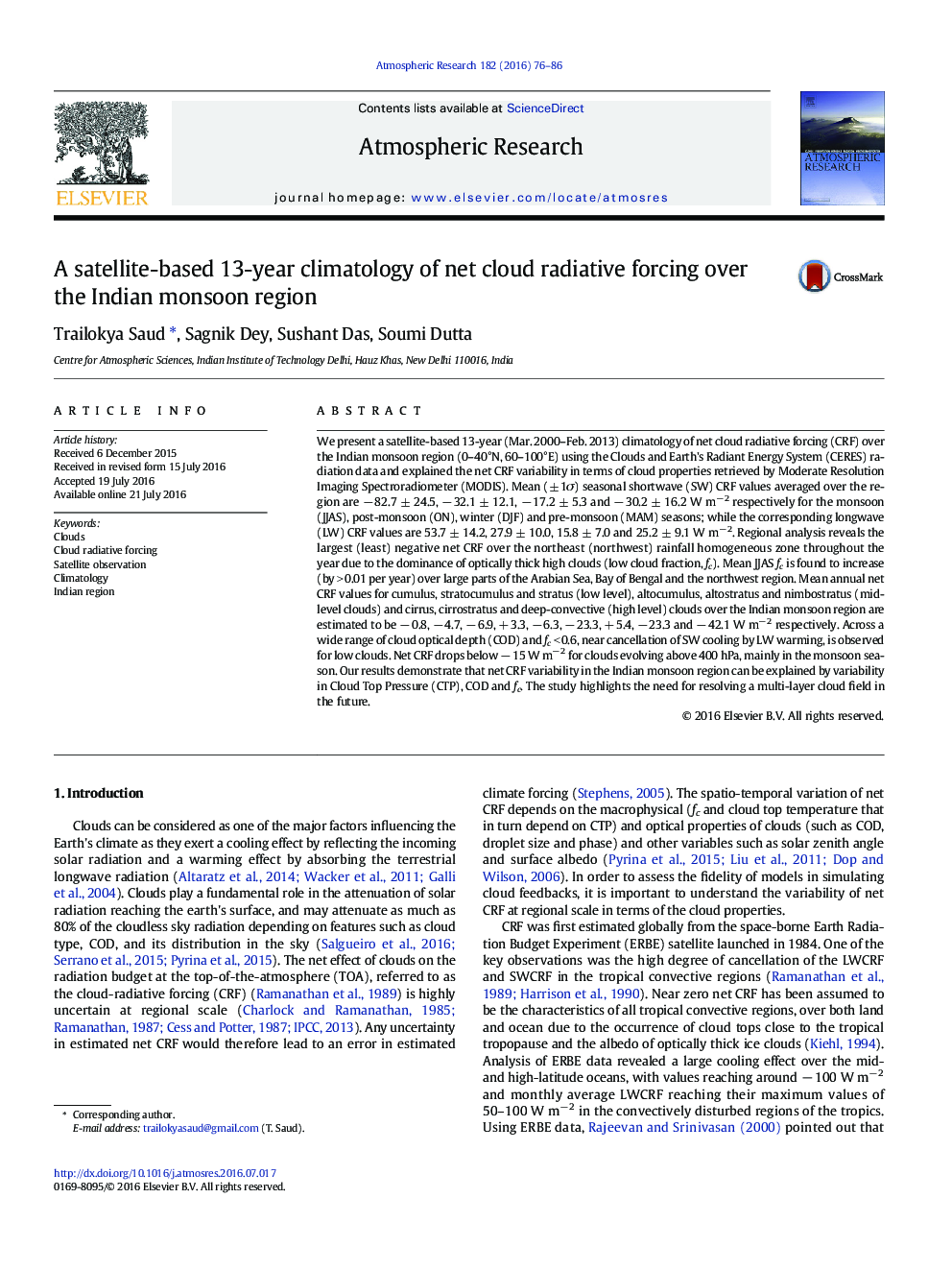| کد مقاله | کد نشریه | سال انتشار | مقاله انگلیسی | نسخه تمام متن |
|---|---|---|---|---|
| 6342843 | 1620499 | 2016 | 11 صفحه PDF | دانلود رایگان |
- Seasonal climatology of SW and LW cloud radiative forcing was examined using satellite data.
- Net cloud radiative forcing for each individual cloud type is quantified over the Indian monsoon region.
- The cloud fraction threshold above which NETCRF switches from warming to cooling decreases with a decrease in CTP.
We present a satellite-based 13-year (Mar. 2000-Feb. 2013) climatology of net cloud radiative forcing (CRF) over the Indian monsoon region (0-40°N, 60-100°E) using the Clouds and Earth's Radiant Energy System (CERES) radiation data and explained the net CRF variability in terms of cloud properties retrieved by Moderate Resolution Imaging Spectroradiometer (MODIS). Mean (± 1Ï) seasonal shortwave (SW) CRF values averaged over the region are â 82.7 ± 24.5, â 32.1 ± 12.1, â 17.2 ± 5.3 and â 30.2 ± 16.2 W mâ 2 respectively for the monsoon (JJAS), post-monsoon (ON), winter (DJF) and pre-monsoon (MAM) seasons; while the corresponding longwave (LW) CRF values are 53.7 ± 14.2, 27.9 ± 10.0, 15.8 ± 7.0 and 25.2 ± 9.1 W mâ 2. Regional analysis reveals the largest (least) negative net CRF over the northeast (northwest) rainfall homogeneous zone throughout the year due to the dominance of optically thick high clouds (low cloud fraction, fc). Mean JJAS fc is found to increase (by > 0.01 per year) over large parts of the Arabian Sea, Bay of Bengal and the northwest region. Mean annual net CRF values for cumulus, stratocumulus and stratus (low level), altocumulus, altostratus and nimbostratus (mid-level clouds) and cirrus, cirrostratus and deep-convective (high level) clouds over the Indian monsoon region are estimated to be â 0.8, â 4.7, â 6.9, + 3.3, â 6.3, â 23.3, + 5.4, â 23.3 and â 42.1 W mâ 2 respectively. Across a wide range of cloud optical depth (COD) and fc < 0.6, near cancellation of SW cooling by LW warming, is observed for low clouds. Net CRF drops below â 15 W mâ 2 for clouds evolving above 400 hPa, mainly in the monsoon season. Our results demonstrate that net CRF variability in the Indian monsoon region can be explained by variability in Cloud Top Pressure (CTP), COD and fc. The study highlights the need for resolving a multi-layer cloud field in the future.
Journal: Atmospheric Research - Volume 182, 15 December 2016, Pages 76-86
